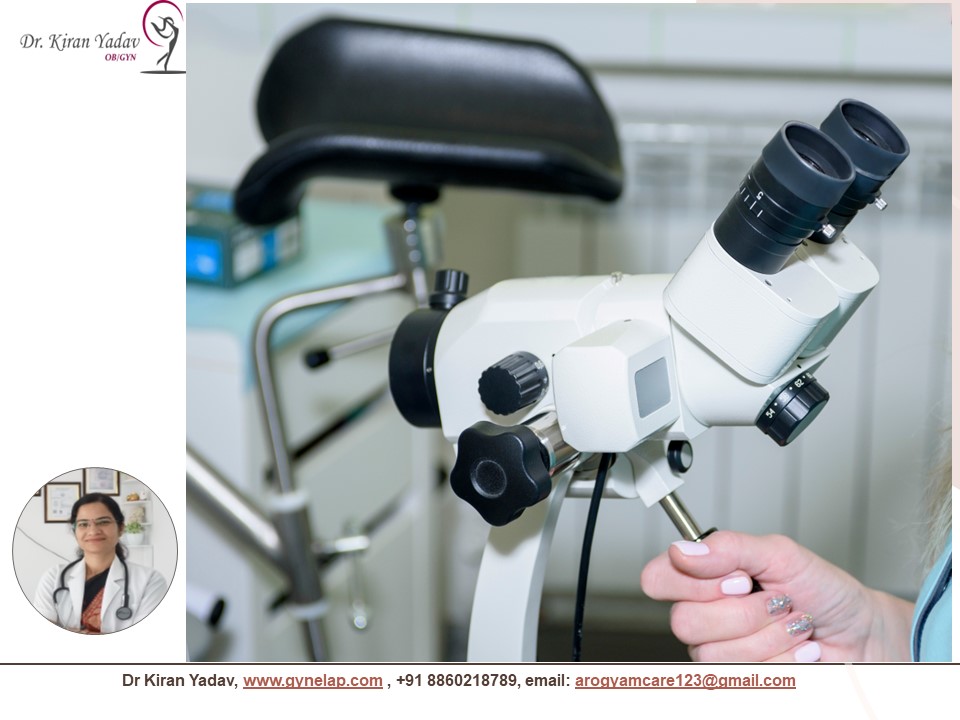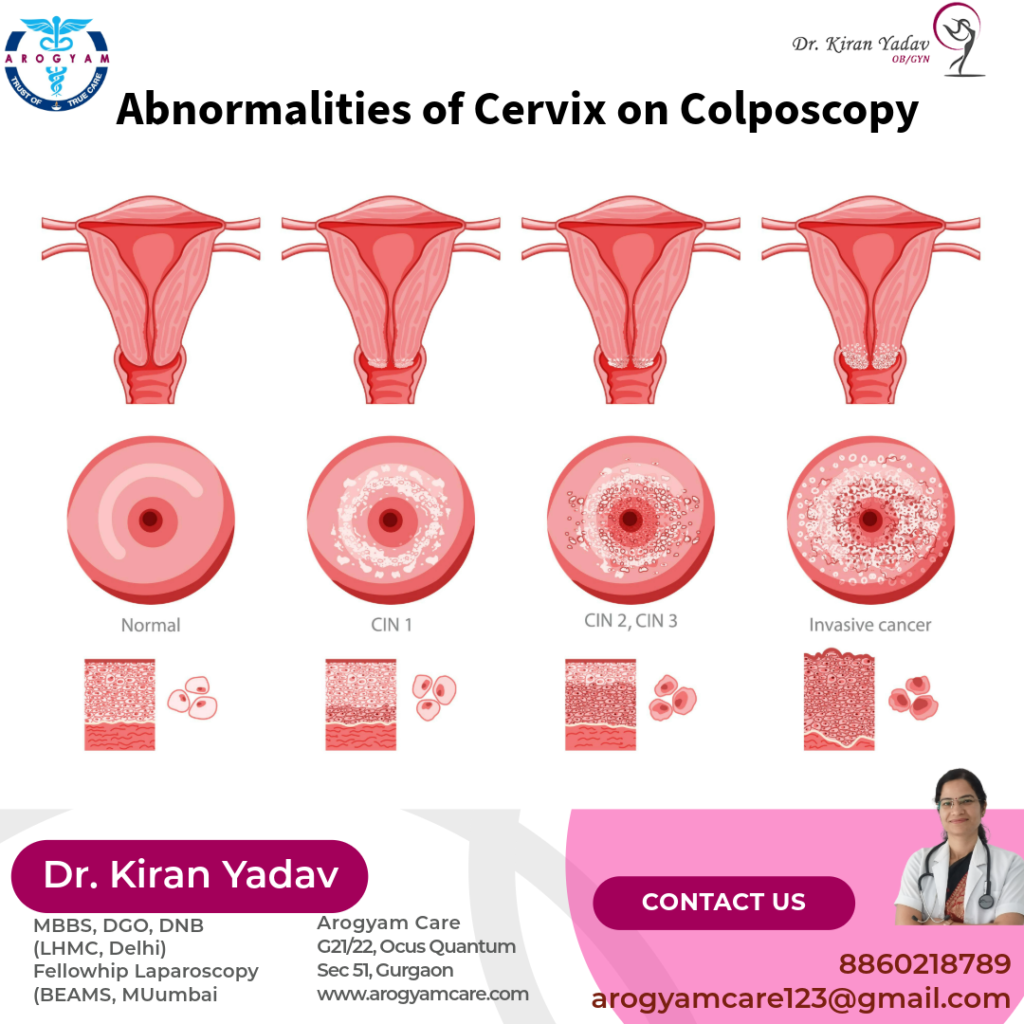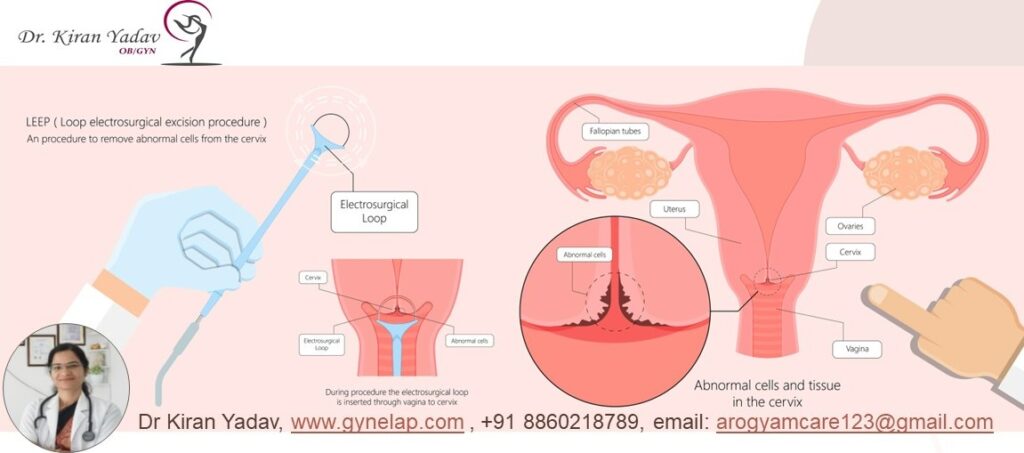Colposcopy procedure is a kind of examination of cervix, vagina and vulva under magnification for signs of disease. It is usually done when a Pap test or an HPV test shows abnormal results and no visible problem on gross examination. Colposcopy can help diagnose cervical cancer or precancerous changes in the cells of the cervix. Coloposcopy biopsy also detect other infection and changes in cervix like cervicitis.

During a colposcopy test, the doctor uses a special instrument called a colposcope, which is like a pair of binoculars on a stand with a bright light. The colposcope does not touch the patient or go inside the vagina. The doctor inserts a metal speculum into the vagina to hold it open and see the cervix. The doctor then applies a vinegar-like solution to the cervix, which makes abnormal cells appear white. The doctor looks at the cervix through the colposcope and may take a small sample of tissue (a biopsy) from any suspicious areas. The biopsy is sent to a laboratory for further testing.
Uses of colposcopy
The primary purpose of colposcopy is the early detection of cervical abnormalities. It is commonly used in the following scenarios:
- Abnormal Pap Smear Results: Colposcopy is often recommended when a Pap smear, which is a screening test for cervical cancer, shows abnormal results. The procedure helps determine the extent of cell changes and guides subsequent treatment decisions.
- Human Papillomavirus (HPV) Infection: HPV is a common sexually transmitted infection linked to cervical cancer. Colposcopy is used to assess cervical changes in women with persistent HPV infections and precancerous changes caused by it- cervical intraepithelial neoplasia (CIN).
- Unexplained Symptoms: If a woman experiences unusual symptoms such as bleeding between periods, after intercourse, or after menopause, colposcopy might be performed to investigate the underlying cause.
Loop Electrosurgical Excision Procedure (LEEP)
effective treatment for cervical dysplasia, which is a precancerous condition of the cervix. LEEP uses a thin wire loop that carries an electric current to cut away the abnormal tissue from the cervix. LEEP has advantages over other methods such as cryotherapy or laser therapy:
- remove more tissue, less recurrence.
- tissue sample for further testing.
- fewer complications such as bleeding, infection, or scarring.
- less expensive and more convenient as it does not require general anesthesia.




